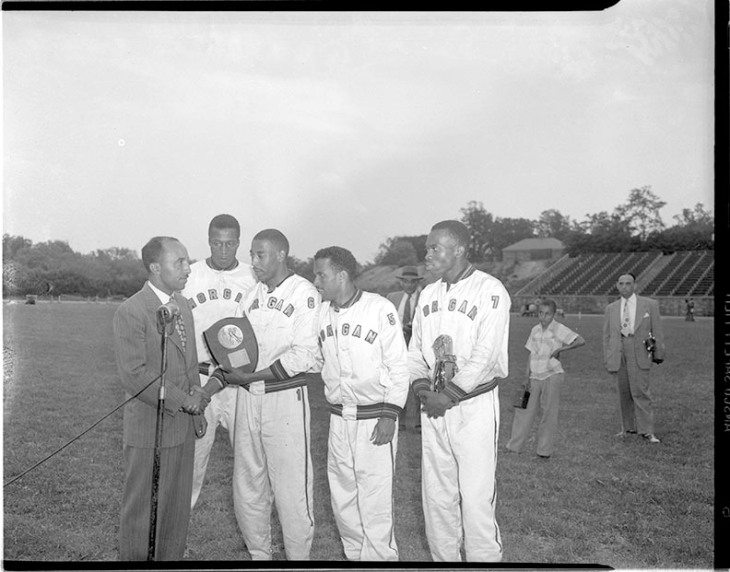EXHIBIT AT JAMES E. LEWIS MUSEUM OF ART, MORGAN STATE UNIVERSITY
Opening February 2, 2016; Reception February 11, 2016, 4:30p-6:30p

The Maryland Historical Society (MdHS) proudly announces the opening of its popular traveling exhibition of the work of photojournalist Paul Henderson on February 2, 2016 at Morgan University’s James E. Lewis Museum of Art. This exhibit is nearly twice as large as the show currently on display at MdHS and is free and open to the public. It features over 30 never-before-publically-exhibited Henderson works that focus on MSU. The show will be up through the end of March.
Paul Henderson’s work is an invaluable visual record of both the Civil Rights movement and everyday life in Maryland. He may be best known as the Baltimore Afro-American newspaper’s first photographer, starting at the paper in 1929. From 1947 through 1955, Henderson spent a lot of time on the campus of Morgan State College (now University). semi-retiring in 1960. Talented and prolific, he created a body of more than 7,000 images, most of them unidentified, by subject or location, at the time of his death in 1988. MdHS has been working for over five years to put names to people and places.
Paul Henderson: Photographing Morgan features an interactive component, as MdHS continues its research to identify the people and locations in Henderson’s photos. Most of the prints containing unidentified people and places are accompanied by QR codes that will connect smartphone users to an online survey where information can be submitted. Identification forms will also be available in the gallery.
Paul Henderson: Photographing Morgan was curated by Joe Tropea. An opening reception will be held at the James E. Lewis Museum of Art on Feb. 11, 4:30pm–6:30pm. 2201 Argonne Dr. Baltimore, MD 21251



